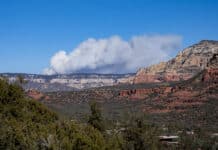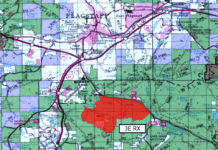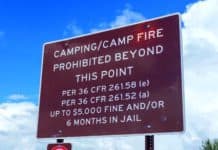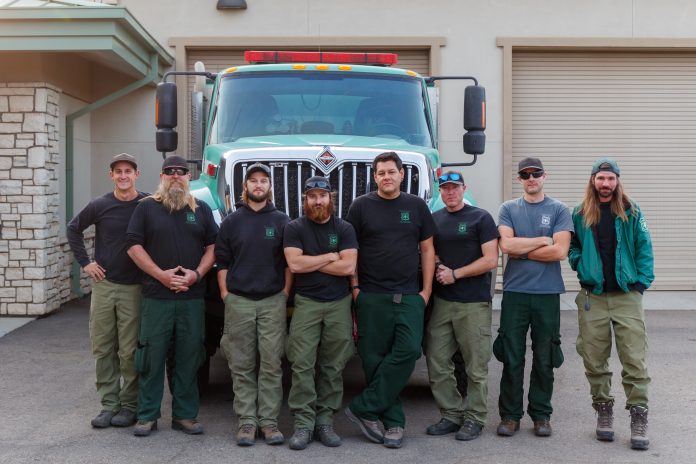
On Saturday, Sept. 12, under a morning sky tinted an eerie orange by smoke from fires in California and Colorado, a U.S. Forest Service fire engine and work truck pulled out of Prescott National Forest’s Verde Ranger Station in Camp Verde carrying a crew of eight Forest Service firefighters bound for the California border.
Once at the state line, the crew of Engine 951, captained by Tim Wilson, would check in with local authorities and receive an assignment for fighting one of the 29 major blazes choking skies and threatening lives and homes in California, where fires have killed 22 people and destroyed 4,000 structures in just a few weeks. Wilson estimated the crew would be in California for about two weeks.
It was the second USFS engine and crew to go to California last week in response to an urgent call for fire support. Firefighters from other Verde Valley fire districts have also sent resources to the West Coast recently.
Shortly before departure, the Verde Ranger station crew members could be seen carrying overnight bags and backpacks. A shout of “Where’s my coffee?” could be heard from the fire station as 7 a.m. rolled in.
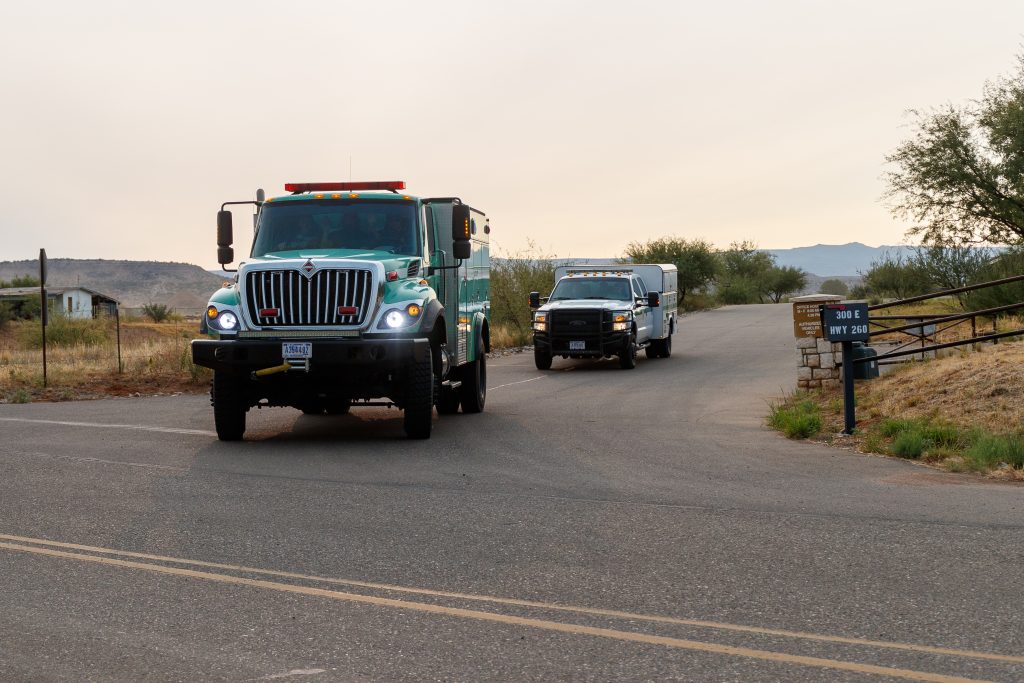
The departure of Arizona fire engines is noteworthy because it was the first time this year USFS firefighters have been cleared by managers to travel out of the state as part of the system of interstate fire support. Agencies that need additional resources to fight active fires place orders for personnel and equipment, and available resources from other regions fill the orders.
The local USFS firefighters had been kept in Arizona far longer into the year than usual, a consequence of the dry monsoon, which has caused the Arizona fire season to continue indefinitely.
“Our [Arizona] season has been so busy,” said Brian Steinhardt, fire management officer for Coconino and Prescott National Forests, noting that the Verde Valley has had 65 wildland fires so far this year, the largest being the Pig Fire, which started Aug. 1 and burned about 500 acres.
Steinhardt said in a normal monsoon season, big rainfalls would effectively end Arizona’s fire season at some point, and then he could share more of his resources with regions where the fire season is just beginning to ramp up. Other regions return the favor for Arizona.
But this year, miniscule rainfall meant reinstating fire restrictions and continued fire danger. So local crews have stayed at home until now, and even now, when the agency is answering California’s call, Steinhardt has had to hold back crews that might otherwise travel out of state. Two of the local agency’s four fire engines and crews are staying in Arizona in case of local fire.
“You still have to protect the homefront, even though we all want to be helping our neighbors,” Steinhardt said.















